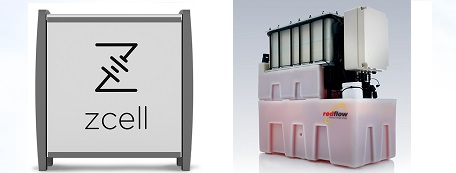Flow Batteries for Household Power Storage
2 min read
EcoGeek –
Residential power storage options are starting to get more competitive with a flow battery being introduced to the market in Australia. Flow batteries have been something we’ve looked at for grid-scale storage, and the research into the technology has been making advances. But it has been primarily a utility-scale technology.
However, the technology has been developed to suit a smaller scale, and a commercial version of a household-scale flow battery is coming to market in Australia with a 10kWh flow battery called ZCell. The ZCell uses a zinc bromide flow battery developed by the parent company Redflow. The Redflow battery offers several advantages over lithium-ion battery packs, including high temperature tolerance without a need for active cooling; full cycle depth available and no cycle depth limitations; no concern about thermal runaway; and an electrolyte that is also naturally fire retardant.
The system has been announced with an installed price of “between $A17,500 and $A19,500 a system” (around 14,000 US dollars or 12,500 Euro). The annual average household energy demand for Australia (in 2010) of 7,227 kWh translates to about 19.8kWh per day, so the ZCell would only account for half of that if it was fully charged and then discharged on a daily basis. However, it is likely that many of the homes and businesses with the greatest interest in the ZCell would be more efficient than average.
Local power storage such as the ZCell or the Tesla Powerwall allows direct storage of energy produced by solar panels or other on-site generation when that production exceeds demand, and then allows that stored energy to be used later, when needed. Local power storage can also be used for load-shifting in areas with tiered electricity rates, where higher prices charged for power during peak periods and off-peak periods have lower rates. In cases like that, the battery is charged during less expensive, off-peak times, and then the battery is used instead of the higher-priced grid power for things that need power during the peak periods of the day.
(c) EcoGeek – Read entire story here.





